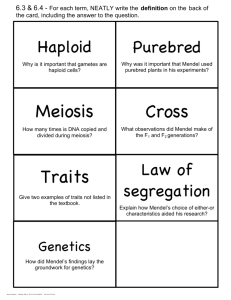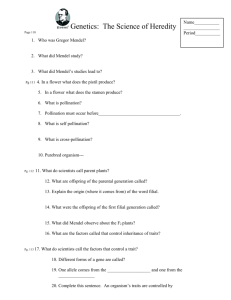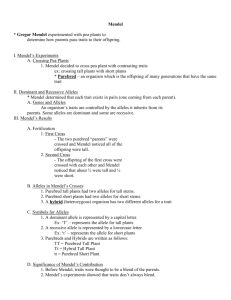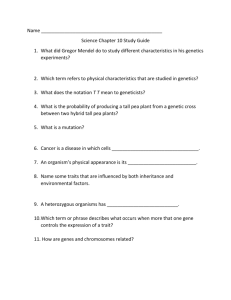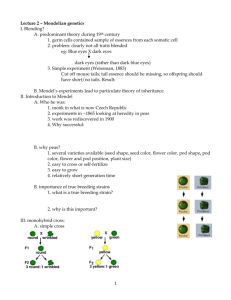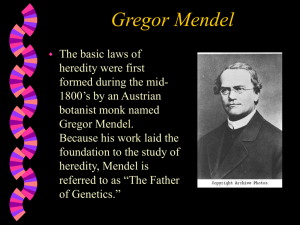GREGOR MENDEL Answer Key
advertisement
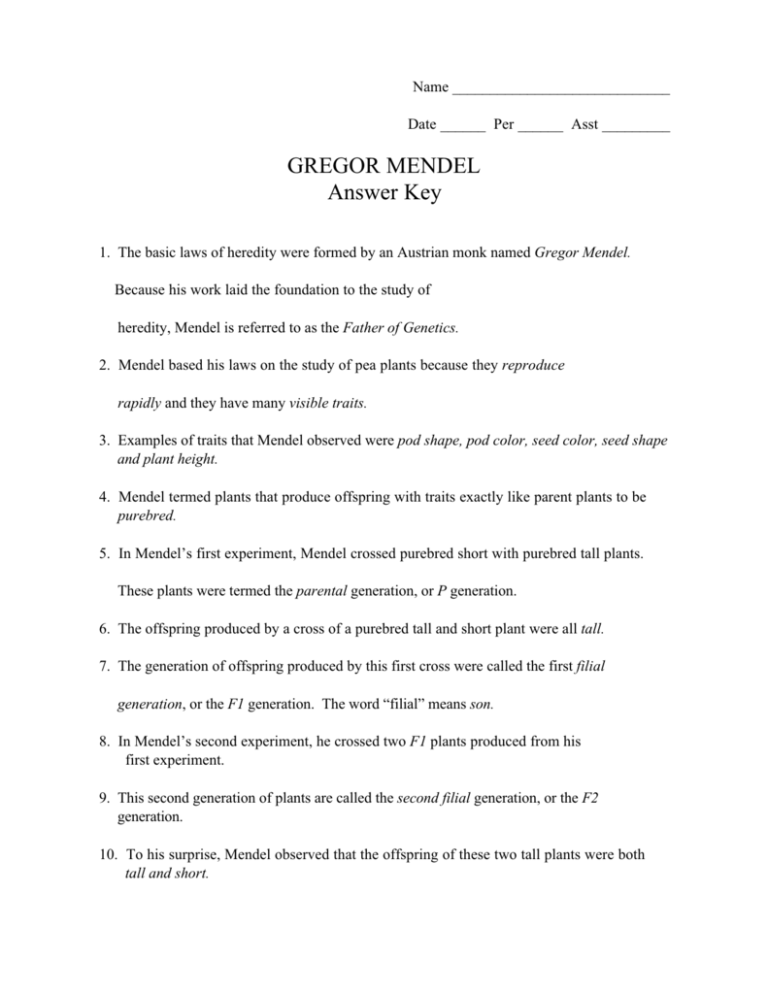
Name _____________________________ Date ______ Per ______ Asst _________ GREGOR MENDEL Answer Key 1. The basic laws of heredity were formed by an Austrian monk named Gregor Mendel. Because his work laid the foundation to the study of heredity, Mendel is referred to as the Father of Genetics. 2. Mendel based his laws on the study of pea plants because they reproduce rapidly and they have many visible traits. 3. Examples of traits that Mendel observed were pod shape, pod color, seed color, seed shape and plant height. 4. Mendel termed plants that produce offspring with traits exactly like parent plants to be purebred. 5. In Mendel’s first experiment, Mendel crossed purebred short with purebred tall plants. These plants were termed the parental generation, or P generation. 6. The offspring produced by a cross of a purebred tall and short plant were all tall. 7. The generation of offspring produced by this first cross were called the first filial generation, or the F1 generation. The word “filial” means son. 8. In Mendel’s second experiment, he crossed two F1 plants produced from his first experiment. 9. This second generation of plants are called the second filial generation, or the F2 generation. 10. To his surprise, Mendel observed that the offspring of these two tall plants were both tall and short. 11. Mendel’s first law is called the Law of Segregation. It has three parts. They are: 1. Plant traits are handed down through hereditary factors. 2. Because offspring obtain hereditary factors from both parents, each plant must contain two factors for every trait. 3. The factors in a pair separate, or segregate during the formation of sex cells, and each sperm or egg receives only one member of the pair. 12. Today, scientists refer to the “factors” that control traits as genes. 13. The different forms of a gene are called alleles. 14. Alleles that hide or mask other alleles are said to be dominant. 15. A recessive allele, such as the short allele in pea plants, is masked or covered up whenever the dominant allele is present. 16. Purebred plants have two identical genes for a particular trait. Another term for purebred is homozygous. 17. When both alleles for a trait are present, the plant is said to be a hybrid for that trait. Hybrid alleles are also called heterozygous. 18. Mendel’s second law is the Law of Independent Assortment. It states that the gene pairs will separate independently of each other in the production of sex cells. 19. Based on the alleles of the four traits shown in the frame, this plant has the color yellow seeds, the color green pods. In addition, it has a pod shape of puckered, and a seed shape of round. 20. According to Mendel’s second law, is it possible for this plant to donate a yellow seed allele along with a green pod allele? Yes
